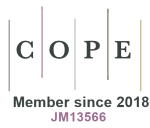Updates in pediatric nephrology: relevant knowledge for the adult nephrologist
DOI:
https://doi.org/10.33393/gcnd.2021.2248Keywords:
Pediatric guidelines, Pediatric kidney disease, Precision medicine, Slow-medicineAbstract
Examples of innovative research in pediatric nephrology include: a) the typically pediatric field of Congenital Anomalies of the Kidney and Urinary Tract (CAKUT), which has benefited from the discovery of numerous gene mutations responsible for the various malformations and the demonstration of the congenital origin of most of the renal damage, resulting in a decrease of invasive imaging, antibiotic prophylaxis and surgery;
b) the approach to glomerular diseases that appear in childhood, like idiopathic nephrotic syndrome (INS), IgA nephropathy (IgAN) and C3 glomerulopathies (C3G).
B and T lymphocyte disregulations and molecular podocyte alterations of immunological and genetic origin have been described in INS as main determinants of proteinuria. In IgAN, the discovery of an abnormal IgA glycosilation in the mucosal B cells has driven to new trials with Budesonide and Sparsentan and to innovative therapies, like atacicept. A new classification of C3G has been proposed after the description of genetic mutations of factors inhibiting activation of the alternative complement pathway, and monoclonal anti-C5 antibody Eculizumab has consequently entered the therapeutic armamentarium;
c) the initial attempts at gene therapy, with promising results obtained in Alport syndrome, nephropathic cystinosis and Dent syndrome.
Moreover, a clear example of precision medicine is represented by the refinement of the dosage of Eculizumab in the treatment of atypical HUS, while slow-medicine recommendations exist for common clinical conditions, like urinary tract infections, microscopic hematuria and proteinuria.
References
- van der Ven AT, Vivante A, Hildebrandt F. Novel Insights into the Pathogenesis of Monogenic Congenital Anomalies of the Kidney and Urinary Tract. J Am Soc Nephrol. 2018;29(1):36-50. https://doi.org/10.1681/ASN.2017050561 PMID:29079659
- Hewitt I, Montini G. Vesicoureteral reflux is it important to find? Pediatr Nephrol. 2021;36(4):1011-1017. PMID:32323004
- Ammenti A, Alberici I, Brugnara M, et al; Italian Society of Pediatric Nephrology. Updated Italian recommendations for the diagnosis, treatment and follow-up of the first febrile urinary tract infection in young children. Acta Paediatr. 2020;109(2):236-247. https://doi.org/10.1111/apa.14988 PMID:31454101
- Jackson AR, Ching CB, McHugh KM, Becknell B. Roles for urothelium in normal and aberrant urinary tract development. Nat Rev Urol. 2020;17(8):459-468. https://doi.org/10.1038/s41585-020-0348-2 PMID:32647226
- Gordon ZN, McLeod DJ, Becknell B, Bates DG, Alpert SA. Uroepithelial Thickening on Sonog-raphy Improves Detection of Vesicoureteral Reflux in Children with First Febrile Urinary Tract Infec-tion. J Urol. 2015;194(4):1074-1079. https://doi.org/10.1016/j.juro.2015.05.001PMID:25963184
- Gordon ZN, McLeod DJ, Ching CB, et al. Uroepithelial thickening improves detection of vesicoureteral reflux in infants with prenatal hydronephrosis. J Pediatr Urol. 2016;12(4):e251-257. https://doi.org/10.1016/j.jpurol.2016.04.018
- Vivarelli M, Massella L, Ruggiero B, Emma F. Minimal Change Disease. Clin J Am Soc Nephrol. 2017;12(2):332-345. https://doi.org/10.2215/CJN.05000516 PMID:27940460
- Colucci M, Corpetti G, Emma F, Vivarelli M. Immunology of idiopathic nephrotic syndro-me. Pediatr Nephrol. 2018;33(4):573-584. https://doi.org/10.1007/s00467-017-3677-5PMID:28451893
- Colucci M, Carsetti R, Cascioli S, et al. B Cell Reconstitution after Rituximab Treatment in Idio-pathic Nephrotic Syndrome. J Am Soc Nephrol. 2016;27(6):1811-1822. https://doi.org/10.1681/ASN.2015050523 PMID:26567244
- Trautmann A, Schnaidt S, Lipska-Ziętkiewicz BS, et al; PodoNet Consortium. Long-Term Out-come of Steroid-Resistant Nephrotic Syndrome in Children. J Am Soc Nephrol. 2017;28(10):3055-3065. https://doi.org/10.1681/ASN.2016101121 PMID:28566477
- Kopp JB, Anders HJ, Susztak K, et al. Podocytopathies. Nat Rev Dis Primers. 2020;6(1):68. https://doi.org/10.1038/s41572-020-0196-7 PMID:32792490
- Trautmann A, Vivarelli M, Samuel S, et al; International Pediatric Nephrology Association. IPNA clinical practice recommendations for the diagnosis and management of children with steroid-resistant nephrotic syndrome. Pediatr Nephrol. 2020;35(8):1529-1561. https://doi.org/10.1007/s00467-020-04519-1 PMID:32382828
- Morello W, Puvinathan S, Puccio G, et al. Post-transplant recurrence of steroid resistant nephrotic syndrome in children: the Italian experience. J Nephrol. 2020;33(4):849-857. https://doi.org/10.1007/s40620-019-00660-9 PMID:31617157
- Schena FP, Nistor I. Epidemiology of IgA Nephropathy: A Global Perspective. Semin Nephrol. 2018;38(5):435-442. https://doi.org/10.1016/j.semnephrol.2018.05.013 PMID:30177015
- Jarrick S, Lundberg S, Welander A, et al. Mortality in IgA Nephropathy: A Nationwide Popula-tion-Based Cohort Study. J Am Soc Nephrol. 2019;30(5):866-876. https://doi.org/10.1681/ASN.2018101017 PMID:30971457
- Fellström BC, Barratt J, Cook H, et al; NEFIGAN Trial Investigators. Targeted-release budesonide versus placebo in patients with IgA nephropathy (NEFIGAN): a double-blind, random-ised, placebo-controlled phase 2b trial. Lancet. 2017;389(10084):2117-2127. https://doi.org/10.1016/S0140-6736(17)30550-0 PMID:28363480
- Cambier A, Gleeson PJ, Flament H, Le Stang MB, Monteiro RC. New therapeutic perspectives for IgA nephropathy in children. Pediatr Nephrol. 2021;36(3):497-506. https://doi.org/10.1007/s00467-018-4189-7 PMID:32040630
- Zhang YM, Zhang H. Insights into the Role of Mucosal Immunity in IgA Nephropathy. Clin J Am Soc Nephrol. 2018;13(10):1584-1586. https://doi.org/10.2215/CJN.04370418PMID:30065067
- Zipfel PF, Wiech T, Rudnick R, Afonso S, Person F, Skerka C. Complement Inhibitors in Clini-cal Trials for Glomerular Diseases. Front Immunol. 2019;10:2166. https://doi.org/10.3389/fimmu.2019.02166 PMID:31611870
- Fakhouri F, Le Quintrec M, Frémeaux-Bacchi V. Practical management of C3 glomerulopathy and immunoglobulin-mediated MPGN: facts and uncertainties. Kidney Int. 2020;98(5):1135-1148. https://doi.org/10.1016/j.kint.2020.05.053
- Durey MA, Sinha A, Togarsimalemath SK, Bagga A. Anti-complement-factor H-associated glo-merulopathies. Nat Rev Nephrol. 2016;12(9):563-578. https://doi.org/10.1038/nrneph.2016.99PMID:27452363
- Nester CM, Smith RJ. Complement inhibition in C3 glomerulopathy. Semin Immunol. 2016;28(3):241-249. https://doi.org/10.1016/j.smim.2016.06.002 PMID:27402056
- Yamamura T, Horinouchi T, Adachi T, et al. Development of an exon skipping therapy for X-linked Alport syndrome with truncating variants in COL4A5. Nat Commun. 2020;11(1):2777. https://doi.org/10.1038/s41467-020-16605-x PMID:32488001
- Cherqui S, Courtoy PJ. The renal Fanconi syndrome in cystinosis: pathogenic insights and thera-peutic perspectives. Nat Rev Nephrol. 2017;13(2):115-131. https://doi.org/10.1038/nrneph.2016.182 PMID:27990015
- Gabriel SS, Belge H, Gassama A, et al. Bone marrow transplantation improves proximal tubule dysfunction in a mouse model of Dent disease. Kidney Int. 2017;91(4):842-855. https://doi.org/10.1016/j.kint.2016.11.016 PMID:28143656
- Nürnberger J, Philipp T, Witzke O, et al. Eculizumab for atypical hemolytic-uremic syndrome. N Engl J Med. 2009;360(5):542-544. https://doi.org/10.1056/NEJMc0808527 PMID:19179328
- Ardissino G, Tel F, Sgarbanti M, et al. Complement functional tests for monitoring eculizumab treatment in patients with atypical hemolytic uremic syndrome: an update. Pediatr Nephrol. 2018;33(3):457-461. https://doi.org/10.1007/s00467-017-3813-2 PMID:29046944
- Schaefer F, Ardissino G, Ariceta G, et al; Global aHUS Registry. Clinical and genetic predictors of atypical hemolytic uremic syndrome phenotype and outcome. Kidney Int. 2018;94(2):408-418. https://doi.org/10.1016/j.kint.2018.02.029 PMID:29907460
- Ardissino G, Possenti I, Tel F, Testa S, Salardi S, Ladisa V. Discontinuation of eculizumab treat-ment in atypical hemolytic uremic syndrome: an update. Am J Kidney Dis. 2015;66(1):172-173. https://doi.org/10.1053/j.ajkd.2015.04.010 PMID:26111906
- Cuzzoni E, Franca R, De Iudicibus S, et al. MIF plasma level as a possible tool to predict steroid responsiveness in children with idiopathic nephrotic syndrome. Eur J Clin Pharmacol. 2019;75(12):1675-1683. https://doi.org/10.1007/s00228-019-02749-3 PMID:31463578
- Turolo S, Edefonti A, Ghio L, Testa S, Morello W, Montini G. CYP and SXR gene polymor-phisms influence in opposite ways acute rejection rate in pediatric patients with renal transplant. BMC Pediatr. 2020;20(1):246. https://doi.org/10.1186/s12887-020-02152-3PMID:32450827
- Turolo S, Edefonti A, Lepore M, et al. SXR rs3842689: a prognostic factor for steroid sensitivity or resistance in pediatric idiopathic nephrotic syndrome. Pharmacogenomics. 2016;17(11):1227-1233. https://doi.org/10.2217/pgs-2016-0029 PMID:27377607
- Sahbani D, Strumbo B, Tedeschi S, et al. Functional Study of Novel Bartter’s Syndrome Muta-tions in ClC-Kb and Rescue by the Accessory Subunit Barttin Toward Personalized Medicine. Front Pharmacol. 2020;11:327. https://doi.org/10.3389/fphar.2020.00327PMID:32256370
- Xie Y, Bowe B, Mokdad AH, et al. Analysis of the Global Burden of Disease study highlights the global, regional, and national trends of chronic kidney disease epidemiology from 1990 to 2016. Kidney Int. 2018;94(3):567-581. https://doi.org/10.1016/j.kint.2018.04.011PMID:30078514
- Harambat J, Ekulu PM. Inequalities in access to pediatric ESRD care: a global health challen-ge. Pediatr Nephrol. 2016;31(3):353-358. https://doi.org/10.1007/s00467-015-3263-7PMID:26628281
- Montini G, Edefonti A, Galán YS, et al. Non-Medical Risk Factors as Avoidable Determinants of Excess Mortality in Children with Chronic Kidney Disease. A Prospective Cohort Study in Nicara-gua, a Model Low Income Country. PLoS One. 2016;11(5):e0153963. https://doi.org/10.1371/journal.pone.0153963 PMID:27171479
- Harambat J, van Stralen KJ, Verrina E, Groothoff JW, Schaefer F, Jager KJ; ESPN/ERA-EDTA Registry. Likelihood of children with end-stage kidney disease in Europe to live with a functioning kidney transplant is mainly explained by nonmedical factors. Pediatr Nephrol. 2014;29(3):453-459. https://doi.org/10.1007/s00467-013-2665-7 PMID:24232194
- Ferraz FHRP, Rodrigues CIS, Gatto GC, Sá NM. Differences and inequalities in relation to ac-cess to renal replacement therapy in the BRICS countries. Cien Saude Colet. 2017;22(7):2175-2185. https://doi.org/10.1590/1413-81232017227.00662017 PMID:28724000
- Chesnaye NC, van Stralen KJ, Bonthuis M, Harambat J, Groothoff JW, Jager KJ. Survival in children requiring chronic renal replacement therapy. Pediatr Nephrol. 2018;33(4):585-594. https://doi.org/10.1007/s00467-017-3681-9 PMID:28508132
- Patzer RE, Sayed BA, Kutner N, McClellan WM, Amaral S. Racial and ethnic differences in pedi-atric access to preemptive kidney transplantation in the United States. Am J Transplant. 2013;13(7):1769-1781. https://doi.org/10.1111/ajt.12299 PMID:23731389
- Sereni F, Edefonti A, Lepore M, et al. Social and economic determinants of pediatric health ine-qualities: the model of chronic kidney disease. Pediatr Res. 2016;79(1-2):159-168. https://doi.org/10.1038/pr.2015.194 PMID:26466076
- Watkins K. Leaving no one behind: an agenda for equity. Lancet. 2014;384(9961):2248-2255. https://doi.org/10.1016/S0140-6736(13)62421-6 PMID:24814087
- Edefonti A, Marra G, Castellón Perez M, Sandoval Díaz M, Sereni F; Nicaraguan Network of Pediatric Nephrology (NINEPEN). A comprehensive cooperative project for children with renal dis-eases in Nicaragua. Clin Nephrol. 2010;74(suppl 1):S119-S125. PMID:20979976
- Lou-Meda R. ESRD in Guatemala and a model for preventive strategies: outlook of the Guatema-lan Foundation for Children with Kidney Diseases. Ren Fail. 2006;28(8):689-691. https://doi.org/10.1080/08860220600938258 PMID:17162427
- Pasini A, Benetti E, Conti G, et al. The Italian Society for Pediatric Nephrology (SINePe) consen-sus document on the management of nephrotic syndrome in children: part I - Diagnosis and treatment of the first episode and the first relapse. Ital J Pediatr. 2017;43(1):41. https://doi.org/10.1186/s13052-017-0356-x PMID:28427453
- Trautmann A, Vivarelli M, Samuel S, et al; International Pediatric Nephrology Association. IPNA clinical practice recommendations for the diagnosis and management of children with steroid-resistant nephrotic syndrome. Pediatr Nephrol. 2020;35(8):1529-1561. https://doi.org/10.1007/s00467-020-04519-1 PMID:32382828
- Savige J, Gregory M, Gross O, Kashtan C, Ding J, Flinter F. Expert guidelines for the manage-ment of Alport syndrome and thin basement membrane nephropathy. J Am Soc Nephrol. 2013;24(3):364-375. https://doi.org/10.1681/ASN.2012020148 PMID:23349312
- Loirat C, Fakhouri F, Ariceta G, et al; HUS International. An international consensus approach to the management of atypical hemolytic uremic syndrome in children. Pediatr Nephrol. 2016;31(1):15-39. https://doi.org/10.1007/s00467-015-3076-8 PMID:25859752
- Craig BM, Gilbert SM, Herndon JB, Vogel B, Quinn GP. Participation of Older Patients With Prostate Cancer in Medicare Eligible Trials. J Urol. 2010;184(3):1134-1144. https://doi.org/10.1016/j.juro.2010.04.076 PMID:20643449
- Nguyen HT, Benson CB, Bromley B, et al. Multidisciplinary consensus on the classification of prenatal and postnatal urinary tract dilation (UTD classification system). J Pediatr Urol. 2014;10(6):982-998. https://doi.org/10.1016/j.jpurol.2014.10.002 PMID:25435247
- Farrugia MK, Hitchcock R, Radford A, Burki T, Robb A, Murphy F; British Association of Pae-diatric Urologists. British Association of Paediatric Urologists consensus statement on the manage-ment of the primary obstructive megaureter. J Pediatr Urol. 2014;10(1):26-33. https://doi.org/10.1016/j.jpurol.2013.09.018 PMID:24206785











